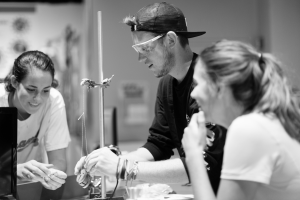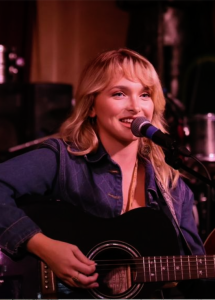When I started Rollins last year, it took me a while to wrap my head around the competencies we must complete. We have to take and pass classes for foreign language, health and wellness, writing, and mathematical thinking in order to graduate. The classes of 2018 and 2019 now have another list of competencies to add to those, instead of the “Alphabet Soup” requirements of upperclassmen.
Students are directed to pick their top two neighborhood options in a survey and are then randomly assigned to either of their choices. So if a student is only interested in one of the options, then he or she might be out of luck. From the Neighborhood courses, students select classes covering the arts, humanities, sciences, and community engagement to complete course requirements. The classes are offered in chronological order, starting at the 100 level.
For my first semester at Rollins, I was in an RCC class while they finished preparations for the start of the Neighborhoods. Therefore, I have really only been through one and a half Neighborhood courses. I remember not having any clue what the “Neighborhoods” were, and I did not hear anything about them until the end of my first semester approached. Nobody realized that we had been chosen to be a sort of “guinea pig” year for Rollins to test out its newest general education system. A lot of the faculty and staff were very excited for the creation of the Neighborhoods, which got me excited as well. Yet there seemed to be problems as soon as the experiment began.
Many people, myself included, had their eyes set on a specific Neighborhood but did not get placed into the one they desired. I understand that not everyone can get their first choice so students are spread evenly, but I could not help being annoyed that I was forced to take classes that I did not want to sign up for. To me, it seems a little reminiscent of high school, and this is college.
We are also only allowed to take one course outside of our Neighborhood, and I had to use up my one course this semester. For some reason my Neighborhood was not offering a science course this semester, and I was not going to wait until there was a course available at the 200 level next semester because science is not my strongest subject. I had to use my one out-of-Neighborhood class choice in order to keep myself from getting a poor grade in a higher-level science within my own Neighborhood. I would have loved to take some humanities or arts courses in different Neighborhoods.
Additionally, students who planned their schedule with a course outside of their Neighborhood last semester were initially dropped from the course. This was because we were unaware that we needed permission from the “mayors” (or faculty directors) of our Neighborhood in order to do so. Therefore, if a student did not realize they had been dropped in time, she may have lost her spot in their initial course choice. This happened to several of my friends.
Overall, I do not appreciate being in the guinea pig year, considering so much can go wrong in the developmental process. I am also irritated that I have to add another set of competencies to my already full course schedule while attempting to double-major. The entire program also reminds me a bit too much of high school curriculum because we are forced into taking classes that do not relate to our major.
However, I do believe that the Neighborhoods are a great opportunity for the newest classes. There are some great courses being offered in these upcoming semesters, and all the professors seem genuinely passionate about what they plan to teach. The Neighborhoods will allow students to study something that they might have never considered before. With being the experimental year, there are of course going to be some bugs that have to be worked out.
Once Rollins has worked through the bugs, the Neighborhoods have the potential to be a great general education system. I have never seen professors so eager and ready to teach classes, which gives me high hopes for the future.








Be First to Comment